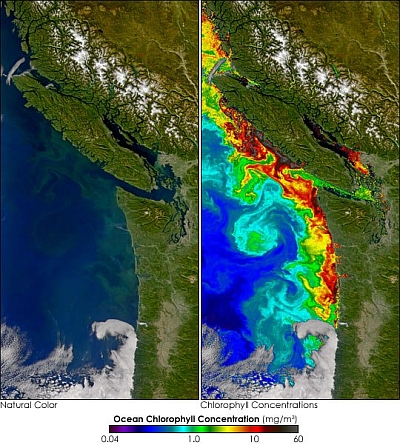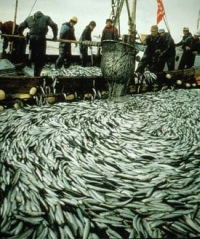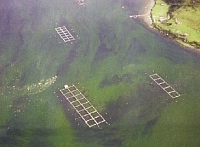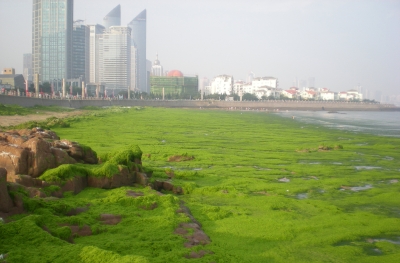3. Harmful Algal Blooms
In what ways can algae be harmful?
The impact of Harmful Algal Blooms (HABs) largely depends on the algal species that caused them. Some algae produce toxins which cause illness or death in humans and other organisms. Exposure to algal toxins can take place via contaminated food and water or through breathing.
Other algal blooms are not directly harmful for humans and animals but they degrade ecosystems by forming such large blooms that they alter the quality of habitats for marine wildlife. Overgrowth of algae causes shading and the reduction of dissolved oxygen in the water (hypoxia), thus adversely affecting corals, seagrasses, and bottom-dwelling organisms.
Impact on human health
Particularly in the tropics people are often harassed by diseases and syndroms due to consumption of seafood contaminated by algal toxins. Some of these diseases may be fatal. However, there is currently no international record of the number of incidents of human intoxication caused by contaminated seafood.
Five human syndroms are presently recognized to be caused by consumption of contaminated seafood:
Although the chemical nature of the toxins is very different, they do not generally change or reduce significantly in amount upon cooking; neither do they generally influence the taste of the meat. Unfortunately, detection of contaminated seafood is not straight forward, and neither fishermen nor consumers can usually determine whether seafood products are safe for consumption.
To reduce the risk of serious seafood poisoning intensive monitoring of the species composition of the phytoplankton is required in the harvesting areas in connection with bioassays and/or chemical analyses of the seafood products.
(Intergovernmental Oceanographic Commission of UNESCO)
Ecosystem impacts
In addition to posing serious health risks to consumers of seafood, some microalgae may have devastating effects on fish and other marine life, both in wild and aquacultures. Several species of micro algae can produce toxins which damage fish gills. This has resulted in extensive fish kills with major economic losses.
Algal blooms often produce high biomass which in turn can cause hypoxia or anoxia (low or no dissolved oxygen), thus degrading habitat quality for fish and bottom-dwelling organisms. Blocking sunlight penetration may also directly inhibit growth of beneficial vegetation.
Economic impacts
Harmful Algal Bloom events may have an impact on a variety of economic sectors. Negative effects for local economies can be quite significant.
In the public health sector human poisonings due to HABs can for example lead to lost wages and work days as well as costs associated with medical treatment. The commercial fishing industry can be affected by loss of product (e.g. through fish mortalities or harvesting closures), higher processing costs, and decreased consumer demand. Public discredit of seafood products is an often experienced effect which is sometimes due to misunderstandings and misinformation about harmful algal events. For communities high expenses may be associated with monitoring and management as well as reductions in property values, and in the tourism sector HAB events may result in lost revenue.
Social and cultural impacts
Social and cultural (often referred to as sociocultural) impacts encompass changes to the ways in which people live, work, play, relate to one another, organise to meet their needs, and generally cope as members of a society. The public health, ecosystem, and economic impacts discussed above can all have sociocultural consequences.
Examples include an increased reliance on social services, loss of recreational opportunities, and shifts in livelihoods.
(see also Lopez et al. 2008)



